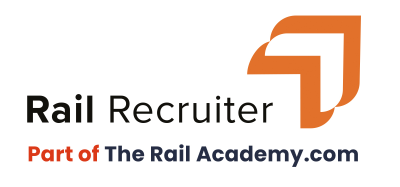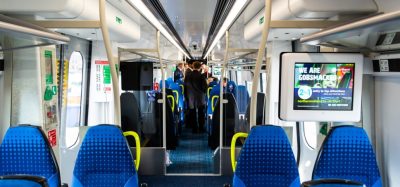The people behind the wheel: Kaido Zimmermann’s story, Estonian Railways
Posted: 2 July 2024 | Kaido Zimmermann - Estonian Railways | No comments yet
For the first instalment of Global Railway Review’s exclusive ‘The people behind the wheel’ series, Kaido Zimmermann, Chairman of the Management Board at Estonian Railways, provides insight into his leadership role, the challenges of modernising the railway sector and his vision for a sustainable and innovative future.


Can you tell us a bit about your role at Estonian Railways?
As the Chairman of the Management Board at Estonian Railways, I lead a publicly owned railway infrastructure management company in Estonia. Our core responsibilities include allocating railway capacity, facilitating infrastructure use and collecting infrastructure charges in accordance with the Railways Act. I also oversee collaboration with stakeholders. Our primary clients are rail freight and passenger transport operators.
Estonian Railways is currently undergoing modernisation, with significant investment projects aimed at reducing the environmental impact of the transport sector and enhancing overall quality. Managing a company with over 700 employees presents its own set of challenges.
What inspired you to seek a career in the transport industry?
I could say that railway and trains were fascinating for a child, but as an adult, I was more influenced by a role model of mine”
Starting a career in the transport industry was not really something planned, rather it was a coincidence. My first memory of the railway dates back to the time when I travelled with my parents from Balti station to visit my grandmother. And yes, I could say that railway and trains were fascinating for a child, but as an adult, I was more influenced by a role model of mine.
The year was 1991, when Jakov Leškin, the General Manager of the Estonian Railways at the time, came to talk to fourth-year students at Tallinn University of Technology about the specifics of the railway and invited them to work for the company. As a result, I became more interested in the railway industry and decided to specialise in it for my master’s studies. In 1995, I became the Infrastructure Manager of Estonian Railways, and the rest is history, as they say.


Credit: Estonian Railways
Have you experienced any challenges in your role and, if yes, how have you overcome them?
Working in such a diverse company obviously presents its challenges. Few of the greatest challenges are meeting deadlines and securing funding, but also resource planning. All the projects must be well planned to avoid problems.
The rail industry is grappling also with labour shortages. As the CEO, addressing workforce gaps and ensuring skilled personnel are available is crucial. With a significant portion of rail employees nearing retirement, we must also address the skills gap. Recruiting and retaining talent is vital for the company’s future. Thus, we have developed different training programmes to support this in our company.
There are also a number of external pressures: we must navigate pressures from clients, shippers, regulators and our owner. Co-operation is the keyword here.
Has a career in rail changed your perception of the industry as a whole?
Railways also have a rich history – in Estonia we have 154 years of it. Being a part of this legacy, allows me to appreciate its impact on society, economic development and connectivity”
You develop an appreciation for the industry. Working in rail exposes you to the intricate infrastructure of a railway ‒ the tracks, bridges, tunnels, control, command and security systems ‒ that keep the system running. Essentially, you gain a deeper understanding of the engineering marvels behind rail transport.
You also get a sense of operational complexities as infrastructure operations involve intricate logistics, safety protocols and co-ordination. As an insider, you get to appreciate the complexity of it all.
Railways also have a rich history – in Estonia we have 154 years of it. Being a part of this legacy, allows me to appreciate its impact on society, economic development and connectivity.
Railways are an eco-friendly mode of transport, so working in the industry has developed my understanding of its positive environmental contribution.
What key pieces of advice would you give to someone who is interested in a career in rail?
My advice is not to be afraid of change, as change presents opportunities for personal and professional growth”
If you choose rail, you can be sure that it will be a career for a lifetime. My advice is not to be afraid of change, as change presents opportunities for personal and professional growth. It pushes us out of our comfort zones. Change also drives innovation. New ideas, technologies and approaches emerge from embracing change. It is worth to remember that stagnation occurs when we resist it. During my almost three decades in rail, I have seen a lot of things change in the industry and it is an exciting prospect to see where the journey leads.


Credit: Estonian Railways – Balti station in Tallinn
Suppose you were tasked with solving one of the biggest challenges in the rail industry today using cutting-edge technology. What challenge would you address, and what innovative solution would you propose?
Obviously, safety comes first. Technology, however, is not fool proof and has not been developed to the stage that we can say that it will prevent all accidents from happening. This is why it is important that we embrace both technological and digital forces to shape rail safety. Technology includes rail traffic management and infrastructure systems, while digital solutions can complement these technologies.
In an ideal world, how do you envision the future of rail evolving?
In an ideal world, the future of rail would be a blend of innovation, sustainability and efficiency. Above all, it would be the most dominant mode of transportation”
Estonian Railway Ltd.’s vision is to be the region’s most advanced railway infrastructure manager, so I hope we can achieve that goal.
But speaking generally, in an ideal world, the future of rail would be a blend of innovation, sustainability and efficiency. Above all, it would be the most dominant mode of transportation.
In addition, artificial intelligence (AI) and cyber security will become more relevant and important, as the future of railways is no longer solely defined by iron; infrastructure maintenance would be easier as sensors and AI would monitor rail conditions in real-time. While predictive maintenance would prevent breakdowns and enhance safety.
I also imagine a more global network of high-speed trains connecting cities and regions. These trains would rival air travel for speed, comfort and environmental impact. Rail would seamlessly connect with other modes of transport ‒ buses, bikes and autonomous vehicles. Probably, the future of rail will also include even more eco-friendly and sustainable energy sources.


Related topics
Sustainability/Decarbonisation, The People Behind the Wheel, The Workforce






